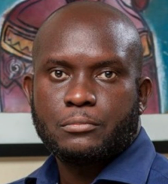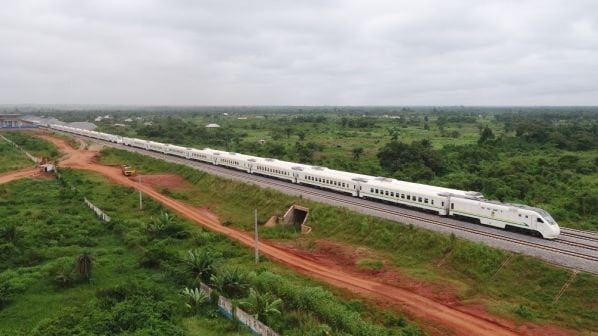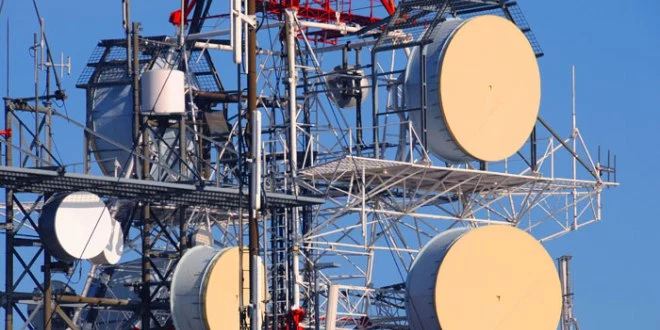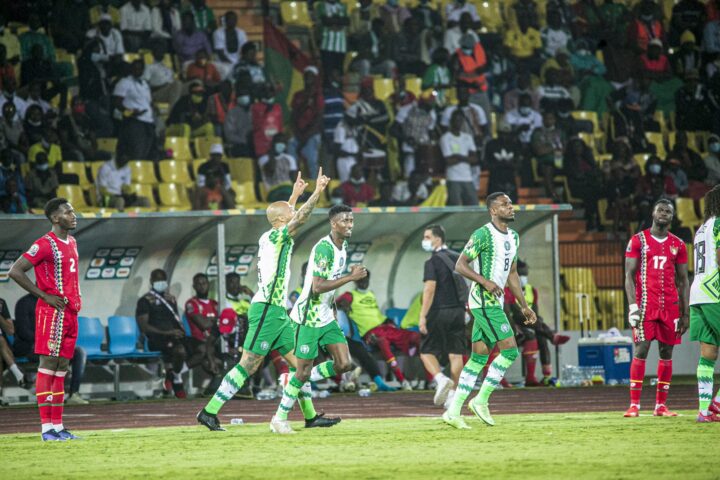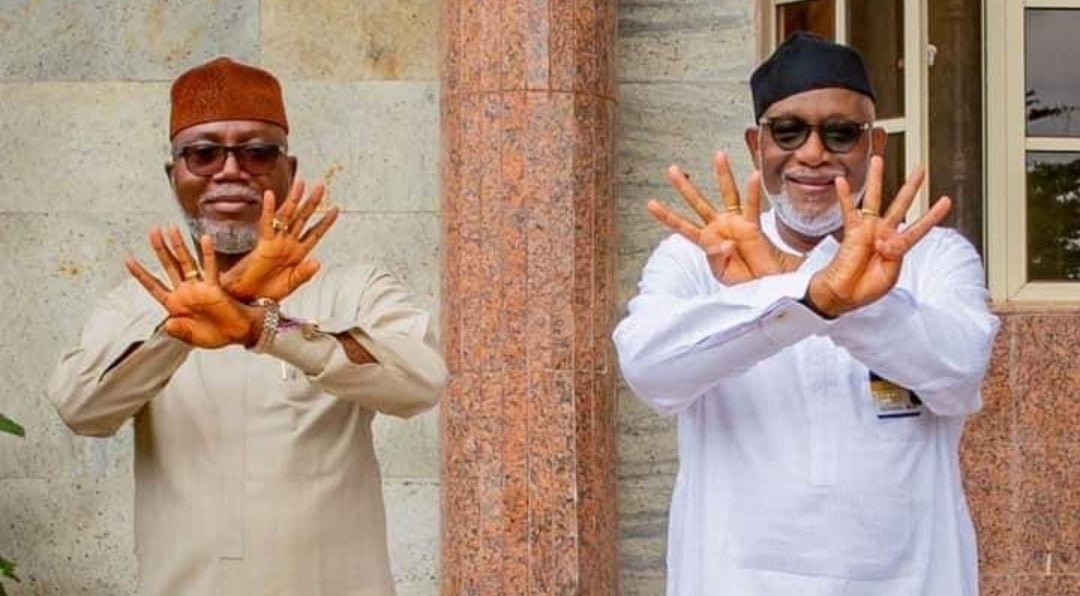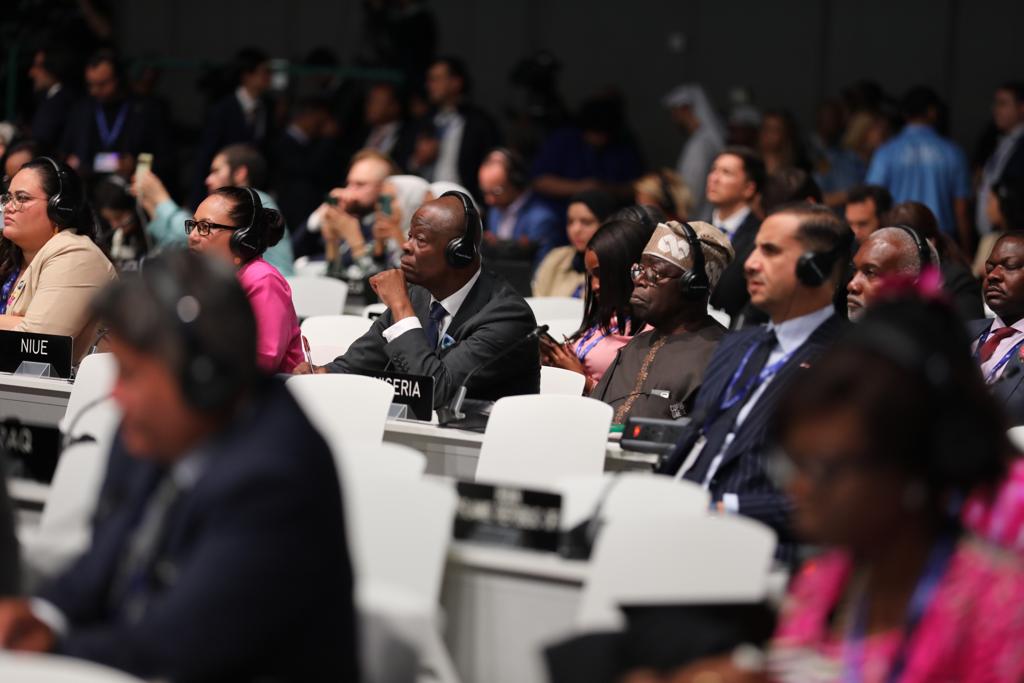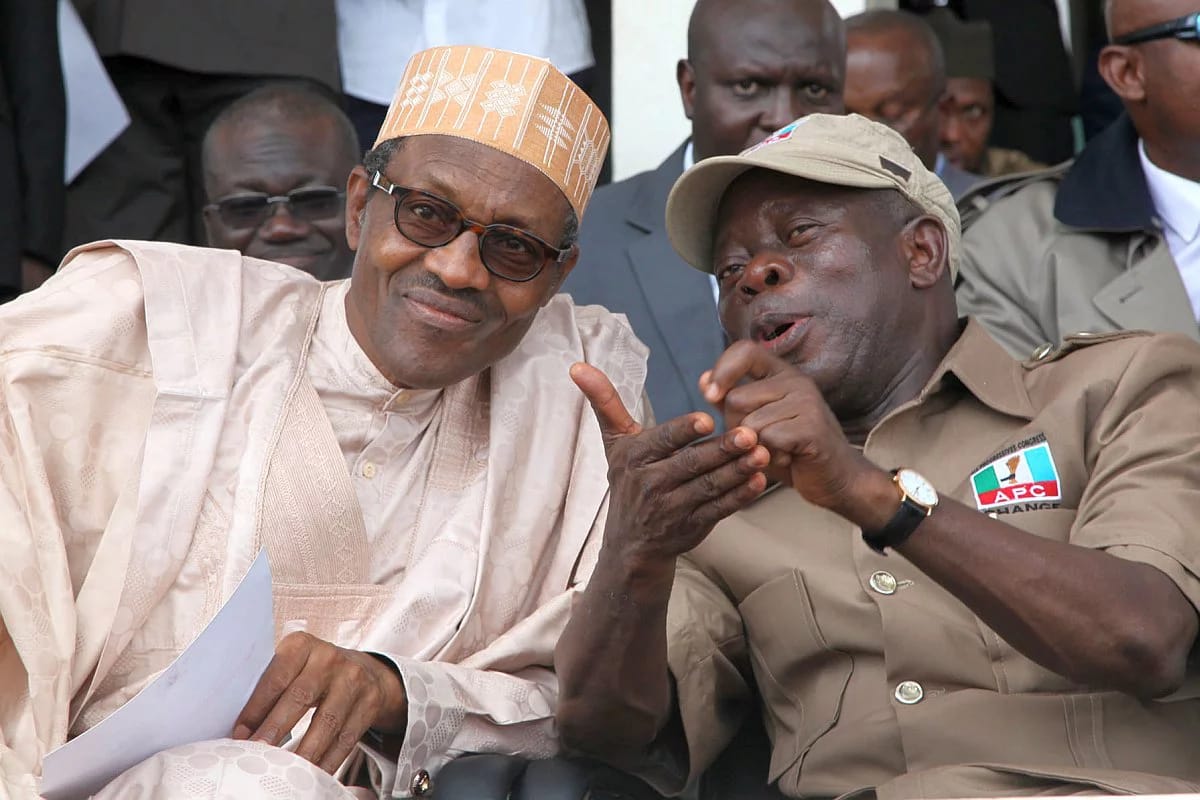Lagos-Ibadan standard gauge rail line
‘I don’t like money’! While Chibuike Rotimi Amaechi, Nigeria’s former Minister of Transport has made this statement a number of times to connote his personal integrity and accountability in managing public funds, there may yet be questions on how he has funded his extensive political career. However, a number of relatively recent legal developments in Nigeria, may have inadvertently provided a complementing framework for the sustainable development of infrastructure projects – some initiated by Amaechi, towards significantly increasing Nigeria’s infrastructure stock. These legal changes, alongside the project outcomes from his time as both Minister and State Governor, may have potentially situated Amaechi among the highest contributors to Nigeria’s infrastructure stock, with the attendant socioeconomic and monetary benefits for Nigerians.
On March 17, 2023, former President Buhari signed into law, sixteen constitution amendment bills. Among them is the Fifth Alteration (No.16), that sought to alter the Constitution of the Federal Republic of Nigeria, 1999 to move the item “railways” from the Exclusive Legislative List to the Concurrent Legislative List; and for related matters. With this, state governments in Nigeria can now invest in the railway sector, which was formerly the exclusive preserve of the federal government. In addition to this, the government, constrained by resources, can seek more partnerships with organisations that can contribute to infrastructure financing.
And what has this new law got to do with Amaechi and Nigeria’s infrastructure stock? A lot, especially when considered within the context of the policies and actions Amaechi implemented as Federal Minister of Transportation from 2015 to 2022. His policies and actions within the period have consciously and unconsciously positioned many states in Nigeria to witness significant improvements in their infrastructure, and economy. Despite his governance input in the past administration, that led to an increase in infrastructure contribution to gross domestic product (GDP) from 20 percent to 40 percent, it still falls significantly below the emerging economy average of 70 percent, and comparatively, South Africa’s 87 percent of GDP.
Nigeria’s low infrastructure stock makes her economically uncompetitive, leading to high unemployment, double digit inflation at 26.72 percent, high public debt of $113.42 billion, low ranking on all major human development indexes, and low economic complexity- with petroleum accounting for over 60 percent on non-debt revenue and 80 percent of foreign exchange earnings. Moody’s Investors Service estimates infrastructure financing shortfall in the country at $3 trillion over the next 30 years, but with annual total government appropriation of about $40 billion. With over 90 percent of government revenue currently spent on debt servicing, the government is largely unable to meet its infrastructure needs.
Advertisement
Amaechi upon assumption of office as Minister of Transport in 2015, concentrated on completing existing ports and railway projects at various levels of work, such as the Kaduna – Abuja 186 km rail project, which was largely constructed by the preceding Goodluck Jonathan administration, and drawn from the Nigeria Rail Development Plan initiated by former President Olusegun Obasanjo. This character trait on policy consistency probably stands him out as a reputable public servant, especially in an environment where good policy inconsistency is rife. He had at an event, publicly acknowledged former President Obasanjo for the plan, which can be rare feat for politicians.
But to understand a lot of the projects by Amaechi as minister, there is need for a bit more understanding of the Railway Development Plan in focus.
With inspiration and leadership from former President Obasanjo, Chief Ojo Maduekwe, the then Minister of Transport, conceived the novel integrated master plan for transportation in the country. Maduekwe, who was transport minister from 2001 – 2003, caused the Federal Ministry of Transport to enter a contractual obligation in 2002 with Julius Berger Nigeria Plc, to design an excellent and globally competitive transportation network for Nigeria. Such vision was expected from Maduekwe, promoter of the ‘Mekaria’ (do better) philosophy, who was a federal parliamentarian in 1983, Nigeria’s Foreign Affairs Minister from 2007 – 2010, Ambassador to Canada from 2012 – 2015, among other positions of public responsibility.
Advertisement
Maduekwe argued that with a land area of 924,000 square kilometres and more than 140 million people, Nigeria required a comprehensively planned transportation network. Therefore, the Nigerian Institute of Transportation Technology, Zaria, Julius Berger and Albert Speer & Partner, were to design and develop a Master Plan for an Integrated Transportation Infrastructure. The well-researched projected plan was in his words, to ‘guarantee a safe, sufficient, comfortable and sustainable inter-regional traffic flow across the nation by the year 2020’, as well as to ‘to present a guideline towards developing the nation’s transportation infrastructure, thereby providing inter-regional connectivity among the major activity centers’. The project had a 25 years’ timeframe, with modern developments that included the Petroleum Products Marketing Company for transportation of petroleum products; road transportation; Nigeria Inland Waterways; railways and any other transport modes. President Obasanjo on August 9, 2006, unfolded the strategic plan, as part of the Vision 20:2020 economic plan of his administration designed to among other things, connect major cities of Nigeria by standard gauge rail.
Amaechi therefore had a plan, which he made efforts to implement, while also doing some review to align with contemporary circumstances. Beyond the Kaduna – Abuja rail line, other completed projects include the Warri – Itakpe 326 km rail line which had been ongoing since 1987, and the Lagos – Ibadan 157 km rail, all which were completed within his ministerial tenure. The revised rail plan of 2017, ensured that states such as Taraba, Bayelsa and Imo were included in standard railway plans for the first time in Nigeria’s history.
Under Amaechi’s supervision as Minister, the Nigeria Railway Corporation (NRC) commenced feasibility studies on 10 new standard gauge rail routes. They include the 300km Lagos-Sagamu-Ijebu Ode-Ore-Benin City East-West rail line; Lagos-Ibadan-Osogbo-Baro-Abuja high speed 615km line; Ajaokuta (Eganyin)-Obajana-Jakura-Baro-Siraj-Abuja rail, with additional line from Ajaokuta to Otukpo (533km); and the 520km Zaria-Kaura Namoda-Sokoto-Ileila-Birnin Koni in Niger Republic. Others are the Benin-Agbor-Onitsha-Nnewi-Owerri-Aba rail, with additional line from Onitsha-Enugu-Abakaliki, 500km; Eganyin (near Ajaokuta)-Lokoja-Abaji-Abuja, 280km; Benin-Sapele-Warri-Yenagoa-Port Harcourt-Aba-Uyo-Calabar-Akampa-Ikom-Obudu Cattle Ranch coastal rail line, 673km; Port Harcourt-Aba-Umuahia-Enugu-Makurdi-Lafia-Kuru-Bauchi-Gombe-Biu-Maiduguri line; Ikom-Obudu-Ogoja-Katsina Ala-Wukari-Jalingo-Yola-Maiduguri line; and the Kano-Nguru-Gusau-Damaturu-Maiduguri-Gamborugala rail line. For the NRC, the standard gauge rail lines will cover a travelling distance of over 3,421 kilometres when completed.
That the feasibility studies on these new rail routes had been done by Amaechi, with project work commencing on some of them, plus a combination of the new law that now allows state government actively participate in railways, presents a strategic opportunity for these proposed projects to the built, and in a timely manner. The state governments and regional organisations through which these rail lines run through, can partner among themselves, to facilitate financing for these projects. They can establish consortia that includes special purpose vehicles (SPVs), towards harnessing additional private sector capital, for the construction of feasible rail lines. Public-private-partnerships (PPP) can therefore be designed, for sustainable development of Nigeria’s infrastructure stock. For example, the Benin-Sapele-Warri-Yenagoa-Port Harcourt-Aba-Uyo-Calabar-Akampa-Ikom-Obudu Cattle Ranch coastal rail line involves most of the Niger Delta Development Commission (NDDC) states, and becomes a project that the NDDC can provide a coordinating implementation framework for, given that the feasibility study has been done, and state governments now have legal backing to invest in railways.
Advertisement
With new law, state governments along the routes of any of these projects can renegotiate these contracts as consortia, and with equity contribution, funding and feasibility analysis that may make the contract sums more affordable. This is more feasible than waiting exclusively for federal government (FG) funding, which may take decades to come. The FG can still make its own contribution towards such projects, but in a more efficient manner. Similar to how the rail lines built by the British colonial administration such as the Port Harcourt – Maiduguri line was for commercial purposes, the renewed focus of government on agriculture, minerals, mining, and other non-oil sources of revenue, plus the access to international market for foreign exchange earnings, becomes a consideration that states can make for investment into railway projects, making them more viable and feasible.
And rail lines are not just the only infrastructure contributions that Amaechi made as Minister of Transport. Dry port projects were initiated at locations such as Jos, Funtua, Kaduna and Aba. He also ensured that improvements were made to all maritime ports, including the ports under the Eastern Port Complex, that were barely functional. That way, the Port Harcourt, Onne, Calabar and Warri ports started receiving more maritime cargo. He also initiated and secured approvals for a new Bonny Deep Sea Port and the Railway Industrial Park in Port Harcourt. The connection of the proposed Bonny Deep Sea Port and the Railway Industrial Park in Port Harcourt, to the rehabilitated Port Harcourt-Maiduguri Eastern Narrow Gauge 2044.1 km rail line project- with new branch lines to Owerri, Imo State, and Damaturu, Yobe State, would further resuscitate the once vibrant railway transportation in the Eastern railway corridor.
While there are concerns on why the Port Harcourt-Maiduguri rail project remains is narrow gauge, not standard gauge, the extended design however means that Chad and Niger Republic, which share borders with Borno state, can use the Bonny Sea Port for export and import, when completed. Given UNCTAD estimates that maritime accounts for the movement of over 80 percent of goods in international trade, the contribution of this project design is quite significant. Bonny Island is home to Nigeria LNG Limited (NLNG), which is the largest liquified natural gas company exporter in Africa, and was established under the liberal economic framework of President Ibrahim Babangida in 1989.
Though maritime is still exclusive to the federal government, the willingness of NLNG to partner provides opportunities for private sector funding for the Bonny Deep Sea Port. NLNG is proving adept at collaborative arrangements, best exemplified by the construction of the Bodo-Bonny Road, which will enable vehicular access to Bonny Island for the first time. The ongoing road project is jointly funded by NLNG and the federal government, and is due for completion in a few months. The Bonny Sea Port project can hopefully get partnership funding from NLNG, as the NLNG is still interested in funding infrastructural projects that enhance its operations. Further evidence of this is in the company recently signifying its interest in funding the reconstruction of the East- West Road, as the reconstruction of this most vital road in the Niger Delta has been hampered for decades.
Advertisement
The new railway law also makes it easier for additional funding from the private sector. In the United States of America which has for decades, been the world’s largest economy, private businessmen such as Cornelius Vanderbilt, played active investment roles in the development of the US railways, which in turn contributed to the US becoming most developed economy in the world. Railways played key roles in opening up the American landmass for harnessing expanded economic opportunities, same as in China and India. Private business people and concerns that require extensive logistics such as Dangote Group and BUA Group, should be encouraged to partner with states and invest in the construction of the Kano – Maradi line and Lagos – Calabar coastal rail line, for which implementation has been slow, due to funding constraints. As validation of the investment prospects in railways, Cornelius Vanderbilt became the richest man in the US, a few years after investing in the railroads.
And it is not only as Minister of Transport, that Amaechi has had the opportunity to develop Nigeria’s infrastructure stock. Amaechi, who was Governor of Rivers State between 2007 – 2015, and also Speaker of the Rivers State House of Assembly between 1999 – 2007, built large number of roads, schools and hospitals. He also built a huge stock of human resource and social infrastructure, especially with Rivers State Sustainable Development Agency (RSSDA). Through the RSSDA, thousands of Rivers state residents were provided full scholarships and trained in leading universities across parts of Europe and North America, in the fields of science, technology, arts, engineering and innovation. RSSDA under Amaechi’s leadership had structured human resource frameworks, including the Special Purpose Grant agreement with United Nations Institute for Training and Research (UNITAR). Through this agreement, youths from the 23 local government areas (LGA) of the state were trained in automation, instrumentation, drilling and welding at Norway and Namibia, as a means of empowering them with valuable oil and gas skills for the Nigerian and global industry. It will be interesting to measure the impact such a large pool of highly trained and globally competitive human resource will have on Rivers state and Nigeria, in the years to come.
Advertisement
Still on human resource development, Amaechi as governor made some unrivalled human and infrastructure investment, that culminated in Port Harcourt, capital of Rivers state, becoming the first sub-Saharan African City to be named the UNESCO World Book Capital for the year 2014. His administration also constructed what are arguably some of the most globally competitive secondary school buildings and infrastructure. The Songhai Integrated Farm, and Rivers Banana Plantation, both at Tai LGA, and the commencement of Greater Port Harcourt project through the establishment of the Greater Port Harcourt City Development Authority (GPHCDA), are some of the other major human and social infrastructure contributions of Amaechi. The GPHCDA was created by law on April 2, 2009, after the completion of the master plan for the area in October 2008. To add that there was the then annual Rivers Carnival ‘Carniriv’, that attracted domestic and foreign tourists to the state.
Though some of the educational, agricultural, social and town planning policies and projects in Rivers state were discontinued by Amaechi’s successor, due to the vagaries of realist politics in developing climes, it is heartwarming to see the calm and gentle current Governor of the state, Siminalayi Fubara, revisit the state’s Songhai Integrated Farm. Perhaps, his training as a public servant and financial specialist- rising to become a former Accountant General of the state, means that he very much appreciates the investments made, and the need for the state to accrue full value for money already spent. It is hoped that Governor Fubara will also revisit the Greater Port Harcourt City Project, as a means of actualizing an expanded development vision for the whole state- beyond overhead bridges.
Advertisement
It is important to note that a number of the projects Amaechi initiated are yet to be completed. The ‘big energy’ he brings to tasks, as well as his penchant for ‘speaking his mind’, may be a turn-off for some. However, the projects he completed as Minister and Governor, are a demonstration of what high energy levels and a bit of brawn can mean, as critical success factors for major infrastructure projects in a developing country. And it should also be noted that more Nigerian-owned firms could have been engaged in the large infrastructure projects he executed in public service. Perhaps, it may be a bit premature to give a final appraisal on his public service conduct, though it will be interesting to know what Dr. Peter Odili, Amaechi’s foremost boss, thinks of his public service performance.
For a man whose name, Chibuike, translates to ‘God is my strength’ or ‘All strength comes from God’, and who openly practices the Christian faith, the Almighty God has used Amaechi to significantly improve Nigeria’s infrastructure stock, with the attendant monetary benefits for the society- money that Amaechi may not like, but which he has used to fund his political career. The somewhat politically challenging and slight evolution of his identity from Ikwerre, to Ikwerre-Igbo, may also suggest a man whose worldview continues to evolve and expand. But we wait to see how that plays out. And do the recent legal qualifications of the foremost ‘Port Harcourt boy’, who doubles as ‘Eze Ochi Aliri Ikwerre’ and ‘Dan Amana Daura’, suggest a man evolving into a more quiet and private life?
Advertisement
Dr Uwanaka writes from African University of Science and Technology, Abuja. [email protected]
Views expressed by contributors are strictly personal and not of TheCable.
